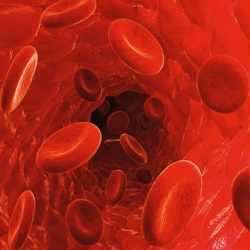
Chemists at the University at Albany, SUNY, have described a new method for quickly but accurately determining a person’s age range based only on a blood sample. The test could one day be used to help narrow down suspects in a crime scene investigation as easily as getting results from a glucose or pregnancy test.
“I hope it will change accelerate the investigation, so you can know right away what is happening,” says Jan Halámek, co-author of the paper, which was published in May in Analytical Chemistry.
Traditional DNA analysis can take up to 72 hours and carries no reliable information about a person’s age. So Halámek and his team focused on levels of alkaline phosphatase (ALP), an enzyme found in blood, to determine age.
In adolescence, active bone growth releases ALP, but when people reach adulthood, bone growth slows and ALP levels begin to plummet. This threshold is generally around age 17 for women and 18 for men. That means the method can help differentiate between juveniles and adults, groups who are treated differently by the legal system.
“There’s more research that has to be done before it’s going to be useful for any type of field investigation,” Schiro says. But assuming it makes it into the field, the test may be helpful if investigators can then combine resulting age ranges with a suspect’s other characteristics, like eye or hair color, he adds.
Halámek says his team is still working on the chemistry of the project. The next step is to study different components in the blood to see if they relate to variables like gender and ethnicity.
